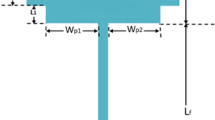Abstract
The implementation of beamforming schemes on the base station side has been widely employed in recent communication networks. Thanks to the small size of microstrip antenna elements in millimeter-wave (mmWave) frequencies, the implementation of uplink beamforming in small-size user equipments (UEs) is now available and recently becoming popular. The practical implementation of beamforming on the UE side is limited by a variety of challenges and bottlenecks, of which the most significant are the hardware and software complexity as well as power consumption, and hence the low-complexity beamsteering techniques such as analog beamsteering is generally preferred to other schemes on the UE side. In this paper, we consider a mmWave D2D underlaid cellular network, wherein D2D UEs are equipped with low-complexity beamsteering capable antennas. The problem is then formally defined as to find the channel scheduling together with assigning optimal directivity angle and transmit powers of D2D UEs corresponding to the maximum throughput of D2D network. We will employ novel distributed solution approach based on generalized benders decomposition scheme. More specifically, we manage to obtain the closed-form solutions of the primal and master subproblems through which the optimal solution variables can be obtained in a low-complexity distributed scheme.









Similar content being viewed by others
References
Lu, X., Sopin, E., Petrov, V., Galinina, O., Moltchanov, D., Ageev, K., Andreev, S., Koucheryavy, Y., Samouylov, K., & Dohler, M. (2019). Integrated use of licensed-and unlicensed-band mmWave radio technology in 5G and beyond. IEEE Access, 7, 24376–24391.
Vannithamby, R., & Talwar, S. (2017). Towards green and soft. In Towards 5G: Applications, requirements and candidate technologies, pp. 53–77. Wiley. https://doi.org/10.1002/9781118979846.ch5
TS 38.101-1: NR; User Equipment (UE) radio transmission and reception; Part 1: Range 1 Standalone”, 16.2.0 ed., 3GPP. 2020-01-13. Retrieved 2020-01-16.
TS 38.101-2: NR; User Equipment (UE) radio transmission and reception; Part 2: Range 2 Standalone”, 16.2.0 ed., 3GPP. 2020-01-13. Retrieved 2020-01-16.
Ni, Y., Jin, S., Xu, W., Wang, Y., Matthaiou, M., & Zhu, H. (2015). Beamforming and interference cancellation for D2D communication underlaying cellular networks. IEEE Transactions on Communications, 64(2), 832–846.
Lee, S., & Lee, J. H. (2018). Joint user scheduling and power allocation for energy efficient millimeter wave NOMA systems with random beamforming. In 2018 IEEE 88th Vehicular Technology Conference (VTC-Fall) (pp. 1–5). IEEE.
Li, C., He, S., Shi, Z., & Chen, J. (2017). Efficient antenna allocation algorithms in millimetre wave wireless communications. IET Communications, 12(5), 543–551.
Sun, X., Yang, N., Yan, S., Ding, Z., Ng, D. W. K., Shen, C., & Zhong, Z. (2018). Joint beamforming and power allocation in downlink NOMA multiuser MIMO networks. IEEE Transactions on Wireless Communications, 17(8), 5367–5381.
Mohamed, E. M., Abdelghany, M. A., & Zareei, M. (2019). An efficient paradigm for multiband WiGig D2D networks. IEEE Access, 7, 70032–70045.
Chen, Y., Ai, B., Niu, Y., He, R., Zhong, Z., & Han, Z. (2019). Resource allocation for device-to-device communications in multi-cell multi-band heterogeneous cellular networks. IEEE Transactions on Vehicular Technology, 68(5), 4760–4773.
Liu, A., Lau, V. K., Zhuang, F., & Chen, J. (2015). Two timescale joint beamforming and routing for multi-antenna D2D networks via stochastic cutting plane. IEEE Transactions on Signal Processing, 63(18), 4854–4865.
Gong, S., Ma, S., Xing, C., & Yang, G. (2019). Optimal beamforming and time allocation for partially wireless powered sensor networks with downlink SWIPT. IEEE Transactions on Signal Processing, 67(12), 3197–3212.
Méndez-Rial, R., Rusu, C., González-Prelcic, N., Alkhateeb, A., & Heath, R. W. (2016). Hybrid MIMO architectures for millimeter wave communications: Phase shifters or switches? Ieee Access, 4, 247–267.
Zhou, Z., Ge, N., Wang, Z., & Chen, S. (2018). Hardware-efficient hybrid precoding for millimeter wave systems with multi-feed reflectarrays. IEEE Access, 6, 6795–6806.
Shehata, M., Crussière, M., & Hélard, M. (2019). On the theoretical limits of beam steering in mmWave massive MIMO channels. In IEEE 30th annual international symposium on personal, indoor and mobile radio communications (PIMRC) (pp. 1–6) IEEE .
Shehata, M., Helard, M., Crussiere, M., Roze, A., & Langlais, C. (2018). Angular based beamforming and power allocation framework in a multi-user millimeter-wave massive MIMO system. In IEEE 87th vehicular technology conference (VTC Spring) (pp. 1–6) IEEE.
Zou, Y., Rave, W., & Fettweis, G. (2016). Analog beamsteering for flexible hybrid beamforming design in mmwave communications. In: 2016 European Conference on Networks and Communications (EuCNC) (pp. 94–99), IEEE.
Martin, R. K., & Thomas, R. (2009). Algorithms and bounds for estimating location, directionality, and environmental parameters of primary spectrum users. IEEE Transactions on Wireless Communications, 8(11), 5692–5701.
Werner, J., et al. (2015). Performance and Cramer-Rao bounds for DoA/RSS estimation and transmitter localization using sectorized antennas. IEEE Transactions on Vehicular Technology, 65(5), 3255–3270.
Goldsmith, A. (2005). Wireless communications. Cambridge University Press.
Monemi, M., & Tabassum, H. (2020). Performance of uav-assisted d2d networks in the finite block-length regime. IEEE Transactions on Communications, 68(11), 7270–7285.
3GPP, Tr 36.828 (v11.0.0): Further enhancements to LTE time division duplex (TDD) for downlink-uplink (DL-UL) interference management and traffic adaptation.
Geoffrion, A. M. (1972). Generalized benders decomposition. Journal of Optimization Theory and Applications, 10(4), 237–260.
Bagajewicz, M., & Manousiouthakis, V. (1991). On the generalized benders decomposition. Computers & Chemical Engineering, 15(10), 691–700.
West, D. B., et al. (1996). Introduction to graph theory (Vol. 2). Prentice Hall.
Akdeniz, M. R., Liu, Y., Samimi, M. K., Sun, S., Rangan, S., Rappaport, T. S., & Erkip, E. (2014). Millimeter wave channel modeling and cellular capacity evaluation. IEEE Journal on Selected Areas in Communications, 32(6), 1164–1179.
Author information
Authors and Affiliations
Corresponding author
Additional information
Publisher's Note
Springer Nature remains neutral with regard to jurisdictional claims in published maps and institutional affiliations.
Rights and permissions
About this article
Cite this article
Monemi, M. Optimal beamsteering on D2D mmWave transmitters by employing general benders decomposition. Wireless Netw 27, 4715–4726 (2021). https://doi.org/10.1007/s11276-021-02763-3
Accepted:
Published:
Issue Date:
DOI: https://doi.org/10.1007/s11276-021-02763-3




